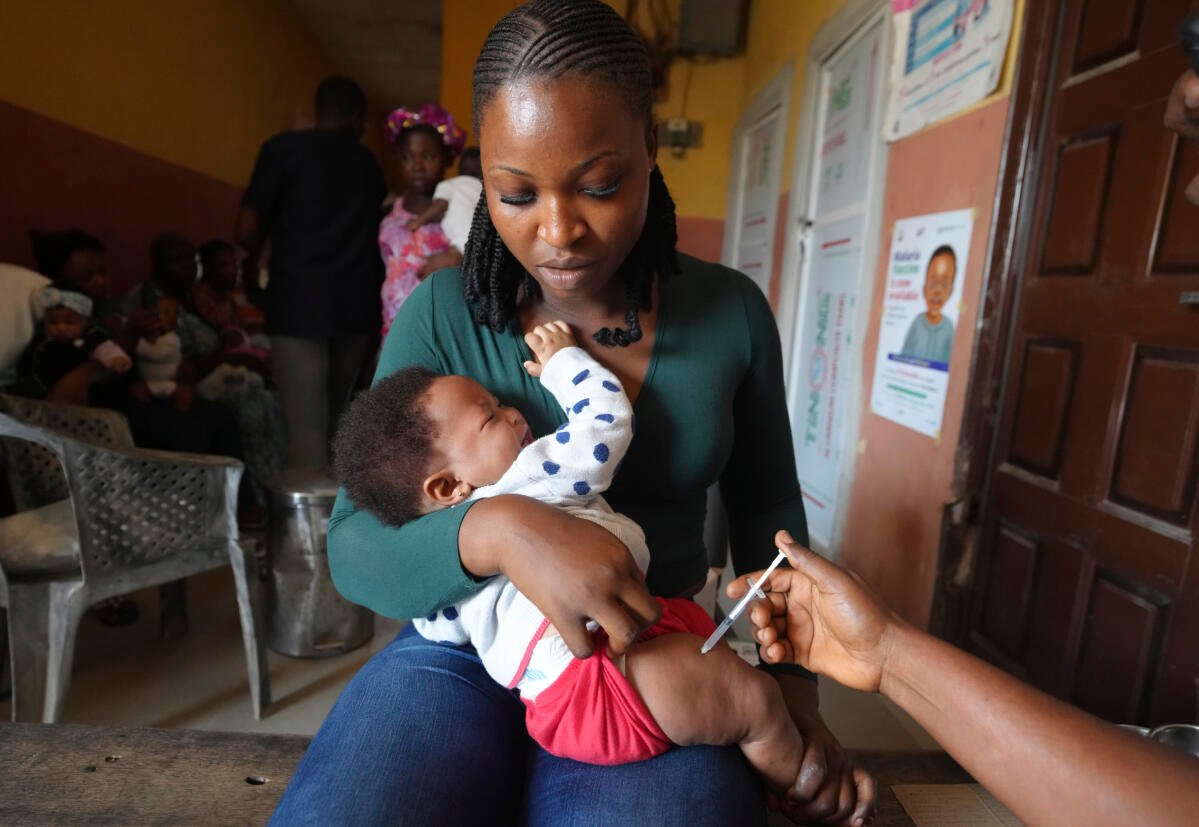KAMPALA, UGANDA – Malaria remains the deadliest disease in Africa, claiming hundreds of thousands of lives each year, particularly among children and pregnant women. The disease, transmitted by infected mosquitoes, poses a severe public health threat, with millions of cases reported annually. However, recent funding cuts by the U.S. government have raised concerns about a potential surge in malaria-related illnesses and deaths. The sudden halt of crucial support from USAID, which has historically played a major role in Africa’s malaria prevention efforts, has left health officials scrambling to manage resources and prepare for a worsening crisis.
The Impact of U.S. Aid Cuts on Malaria Control
Malaria prevention in Africa has heavily relied on international funding, particularly from the U.S. Through the President’s Malaria Initiative, millions of dollars have been allocated yearly to provide essential malaria prevention tools such as insecticide-treated bed nets, anti-malarial medications, and mosquito-spraying programs. However, recent decisions to terminate the majority of USAID’s foreign aid contracts have disrupted the supply chain for these life-saving interventions.
In Uganda, where malaria is a leading cause of death, local health officials have expressed alarm over the aid cuts. Dr. Jimmy Opigo, head of the country’s malaria control program, stated that the sudden funding withdrawal has forced them to shift their focus to emergency response rather than sustained prevention efforts. The consequences are expected to be severe, particularly as the rainy season approaches, creating ideal breeding conditions for malaria-carrying mosquitoes.
A Looming Surge in Malaria Cases
Without sustained funding, the availability of critical malaria control measures is at risk. Bed nets, mosquito sprays, and medication supplies are already dwindling in some areas. In Uganda alone, malaria accounted for over 12 million cases and nearly 16,000 deaths in 2023. The country had relied on U.S. funding of approximately $30 to $35 million annually to support its malaria prevention programs.
Field operations, including mosquito-spraying initiatives that were set to begin before the rainy season, have now been suspended. These programs are essential in reducing mosquito populations before they start multiplying in stagnant water. Without them, a spike in malaria cases is expected, particularly among vulnerable groups such as children under five and pregnant women.
The Ripple Effect Across Africa
The consequences of the U.S. funding cuts extend beyond Uganda. In Nigeria, which bears the highest malaria burden globally, progress in reducing malaria-related deaths is now under threat. With nearly a quarter of the world’s malaria cases occurring in Nigeria, the country has relied heavily on international support to manage its malaria response.
Since 2011, U.S.-funded malaria programs have delivered millions of anti-malarial drugs, bed nets, and diagnostic tools to Nigeria. These initiatives have significantly reduced malaria-related deaths by more than half over the past two decades. However, without continued support, the country faces the risk of reversing these hard-earned gains.
Similarly, in the Democratic Republic of Congo, another country with high malaria prevalence, U.S. aid has played a vital role in malaria control. Over the years, funding has contributed to improving access to treatment and preventive measures. However, ongoing conflict in certain regions of Congo has further complicated the situation, making malaria prevention efforts even more challenging. With the loss of substantial U.S. assistance, many communities are left vulnerable to the disease, particularly those in remote and conflict-affected areas.
Calls for Immediate Action
Public health organizations have warned that even a short-term disruption in malaria prevention efforts could lead to devastating consequences. According to recent projections, just one year of supply chain disruption could result in millions of additional malaria cases and over 100,000 extra deaths worldwide. Given that Africa accounts for the vast majority of global malaria deaths, the impact on the continent would be catastrophic.
Health experts and advocacy groups have urged U.S. policymakers to reconsider the aid cuts and restore funding for malaria control programs. Many are calling for alternative funding routes through global partnerships to ensure continued support. Some organizations, such as the Global Fund to Fight AIDS, Tuberculosis, and Malaria, may step in to fill the gap, but the full extent of their ability to compensate for the loss of USAID funding remains uncertain.
Conclusion
Malaria continues to be a major health crisis in Africa, with millions of lives at risk. The decision to cut U.S. aid funding has already begun to disrupt malaria prevention efforts, threatening to undo years of progress in controlling the disease. As health workers and organizations struggle to manage resources amid increasing challenges, urgent action is needed to restore funding and ensure that life-saving interventions remain accessible to the most vulnerable populations. Without swift intervention, the world could witness a dramatic resurgence of malaria cases and deaths across Africa.

